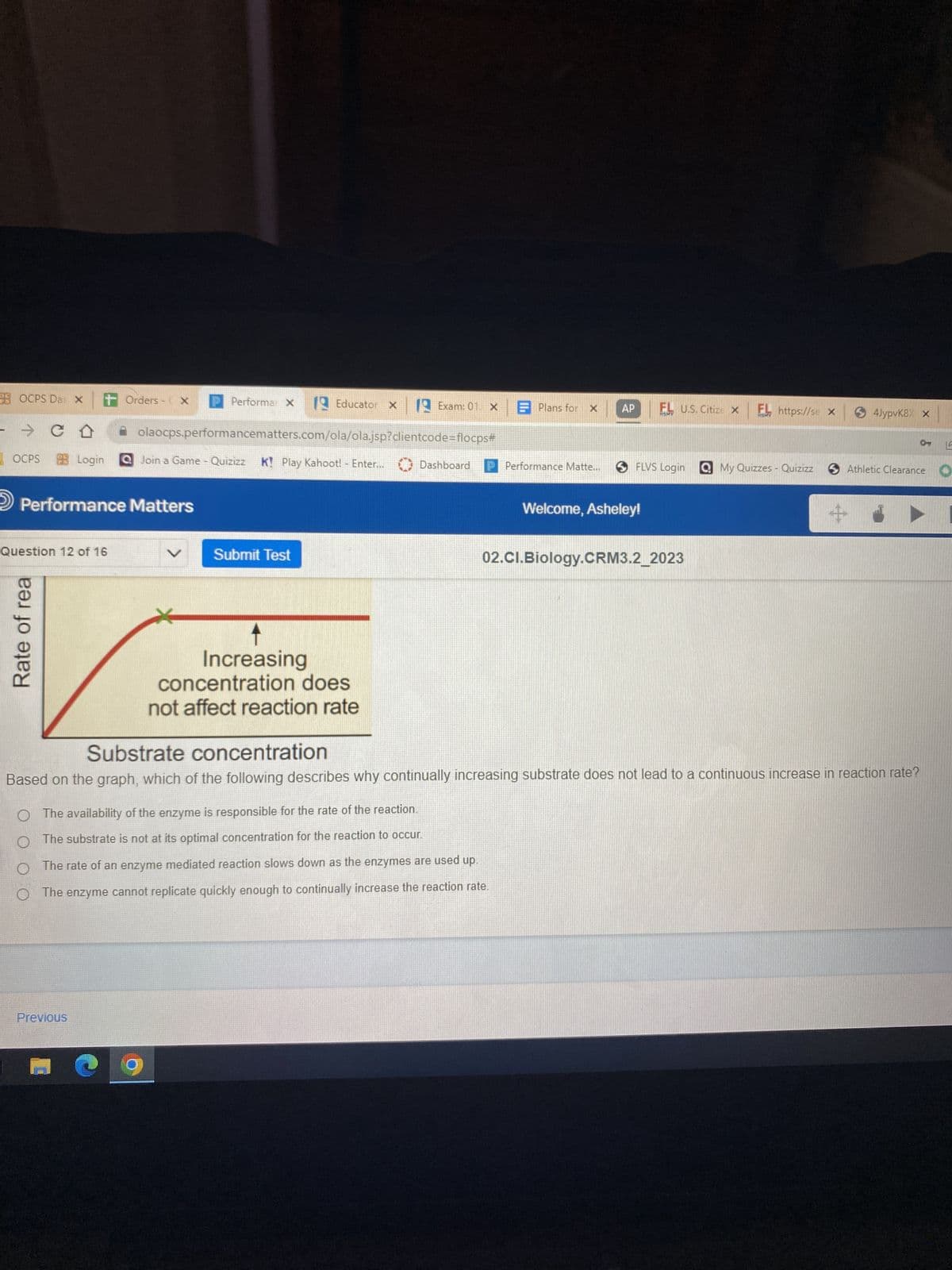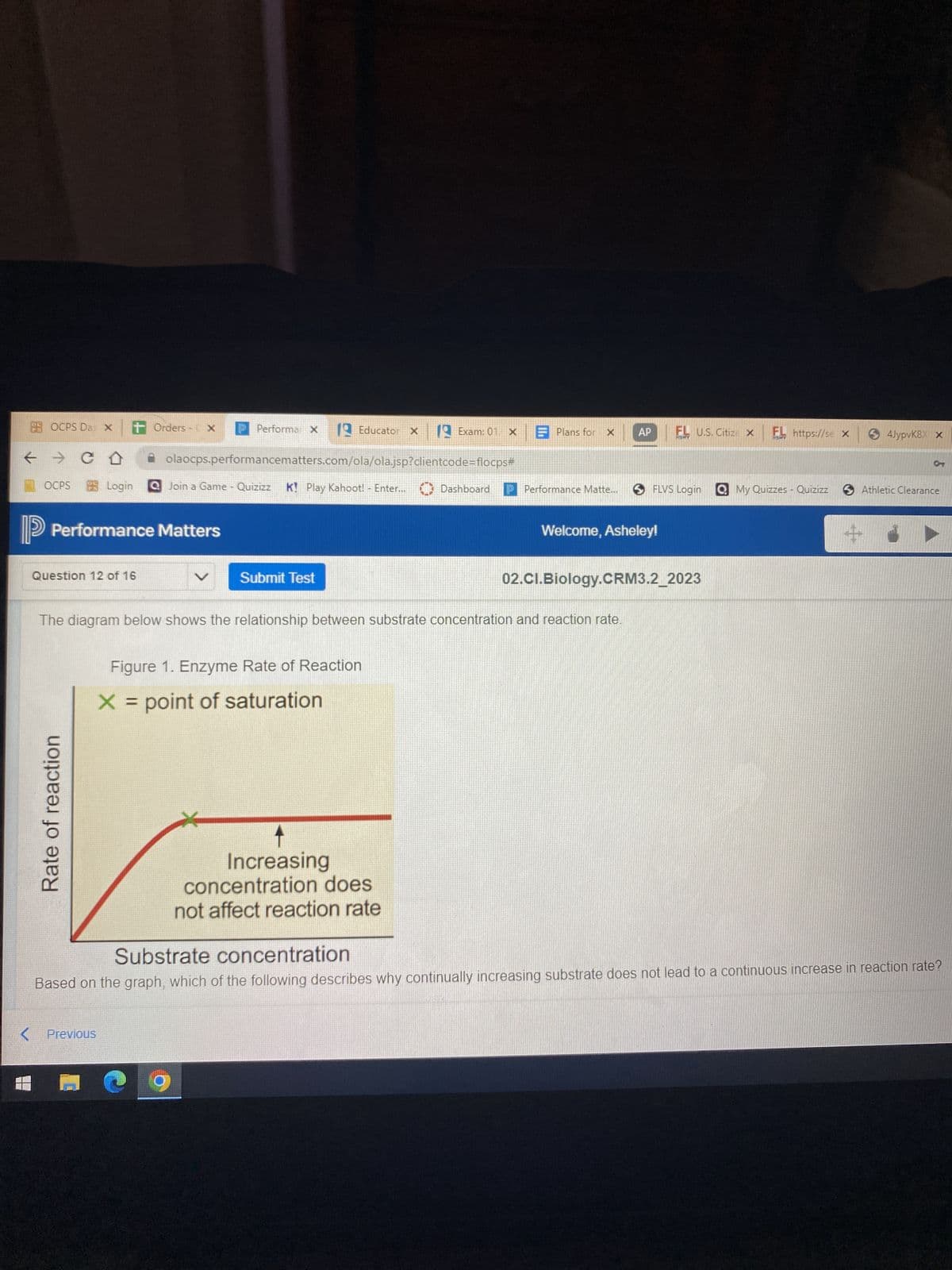OCPS Das X +Orders X - C OCPS Login Performance Matters Question 12 of 16 Rate of rea Performa X Educator X olaocps.performancematters.com/ola/ola.jsp?clientcode=flocps# Join a Game - Quizizz K! Play Kahoot! - Enter... Submit Test Exam: 01 x Increasing concentration does not affect reaction rate Dashboard Plans for X O The availability of the enzyme is responsible for the rate of the reaction. The substrate is not at its optimal concentration for the reaction to occur. The rate of an enzyme mediated reaction slows down as the enzymes are used up. O The enzyme cannot replicate quickly enough to continually increase the reaction rate. Performance Matte... AP FL U.S. Citize X FL https://sex SFLVS Login Welcome, Asheley! 02.Cl.Biology.CRM3.2_2023 My Quizzes - Quizizz 4JypvK8X X Substrate concentration Based on the graph, which of the following describes why continually increasing substrate does not lead to a continuous increase in reaction rate? 0-9 Athletic Clearance O


Introduction:
Enzymes are specialized proteins that act as catalysts in biochemical reactions. They speed up the rate of chemical reactions by lowering the activation energy required for the reaction to occur, without being consumed or altered in the reaction themselves. Enzymes are highly specific, meaning they can only catalyze specific chemical reactions involving specific substrates.
Enzymes have an active site, which is the region of the enzyme that binds with the substrate molecule. The active site is highly specific and complementary in shape to the substrate molecule, allowing the enzyme to catalyze the chemical reaction with high efficiency and specificity. The specificity of the enzyme's active site is determined by the amino acid sequence in the enzyme's primary structure.
Enzymes play important roles in various biological processes such as digestion, metabolism, and DNA replication. They are involved in a wide range of reactions, including the breakdown of large molecules into smaller ones (catabolic reactions), the synthesis of large molecules from smaller ones (anabolic reactions), and the modification of molecules through the addition or removal of functional groups.
Factors such as temperature, pH, substrate concentration, and the presence of inhibitors or activators can affect enzyme activity. Denaturation, or loss of the enzyme's three-dimensional structure, can also occur if the conditions are too extreme, which can result in the loss of enzymatic activity.
Trending now
This is a popular solution!
Step by step
Solved in 2 steps


